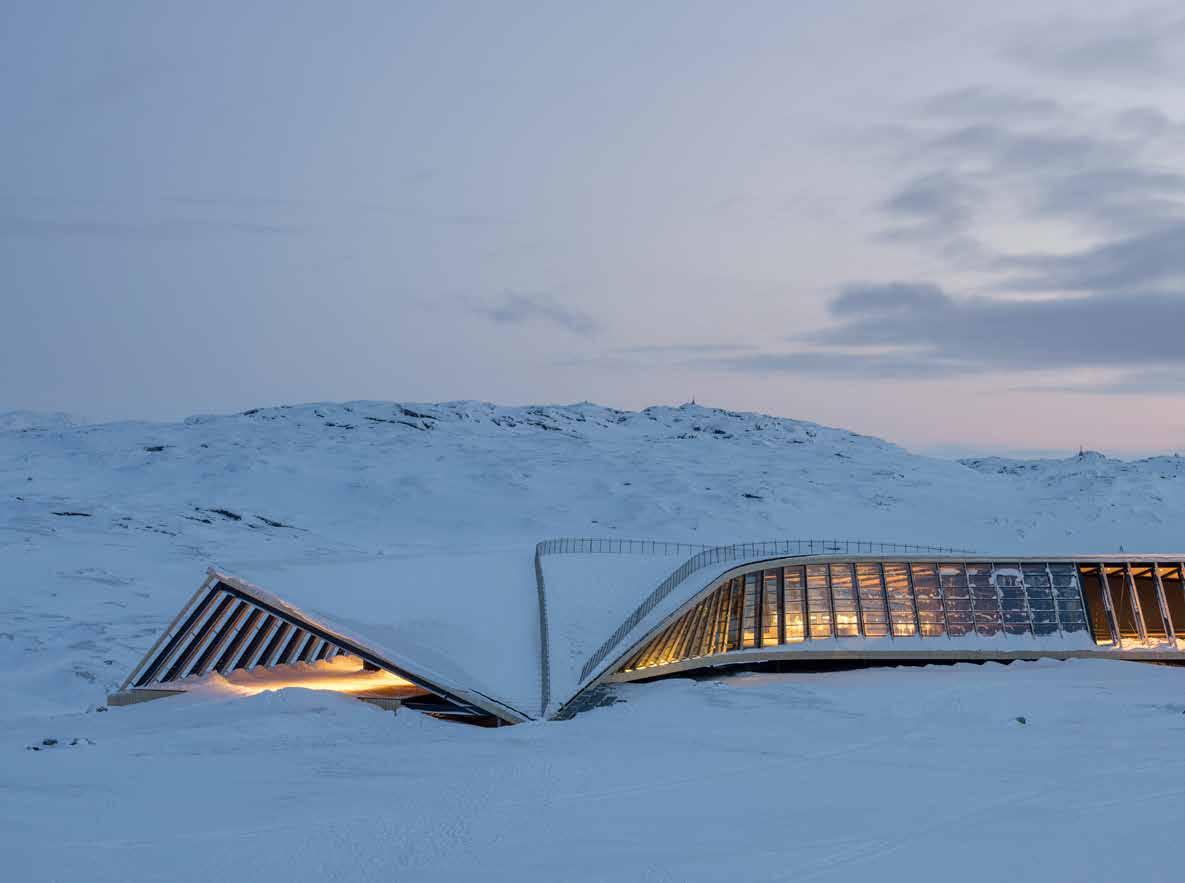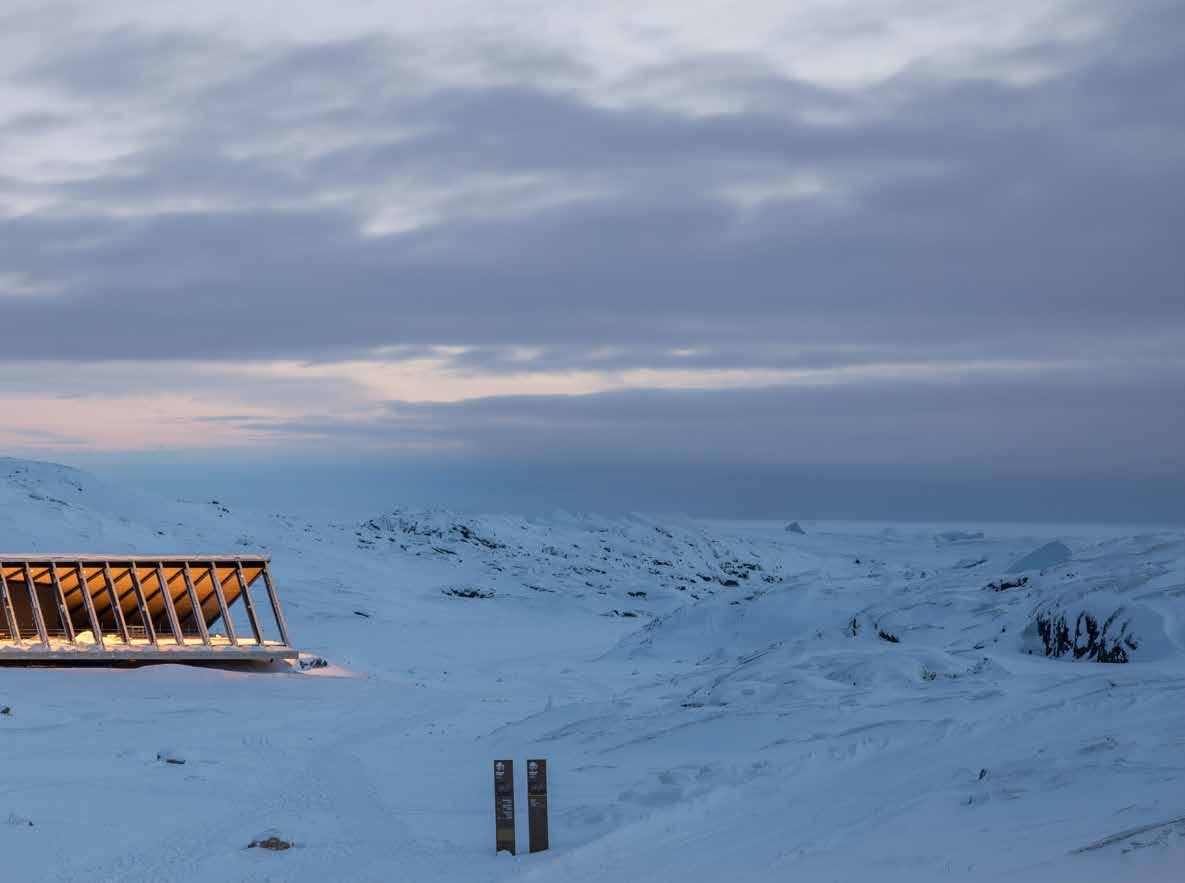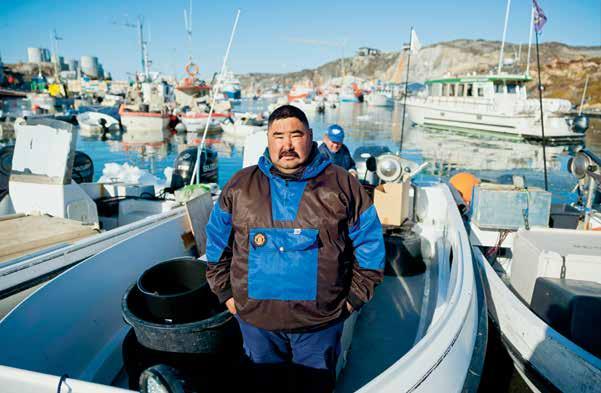
11 minute read
Time
THE FISHERMAN
Eli Kristoffersen, fisherman
Fishing is the main industry in Ilulissat, where both large trawlers and small dinghies land their catch. Eli Kristoffersen has been fishing since he was 17 and goes out on the Icefjord every morning. In Ilulissat Harbour, hundreds of small fishing boats lie close together, side by side. On one of them, a POCA 600 with a 225 horsepower engine, stands Eli Kristoffersen. He’s just returned from Oqaatsut, where he sold and delivered the day’s catch of Greenland halibut. This is what he does every day. Eli has been fishing since he was 17 years old, and when he turned 21, he bought his own boat. Every morning at six, he readies the boat, and by seven, he is on the water, dropping his 500-metre, 1,000-hook long line. All he can do then is wait a few hours and hope for the best. In the summer, he makes a second trip in the early hours of the night but returns in time to sell the night’s catch in the morning when the fish factory opens. Long-line fishing is a method that has been in use for generations in Greenland. Once the hooks are baited, the line is lowered to the sea floor to reach the deep waters where the halibut live. A Greenland halibut can grow up to 1.2 metres in length and weigh more than 45 kilos, although the typical size of the catch ranges from 1.5 up to 6 kilos. ‘I used to pull the fish up by hand, using my heart as the engine,’ says Eli, as he pounds his chest. Today, he has a small engine to do the heavy lifting of pulling in the line. To Eli, every day is a good day. Even though fishing is hard work, all year round. In the winter, he makes the two-hour journey by boat to Torsukattak, north of Ilulissat, to fish and returns before the end of the day.
‘That’s where I catch the big fish, so it’s worth the trip,’ he says and smiles as he extends his arms to demonstrate the size of the fish. ‘I don’t go into work the way others do; I am my own boss.’ Eli’s workplace is out among the large icebergs, but he is used to them by now, after a long life at sea. Climate change is not something he has noticed much. ‘Maybe the fish have become a little smaller, but then I just go farther out, where they’re bigger. And this winter has been cold,’ he says. One change he has noticed is that there are more tourists in town. They also come down to the harbour. ‘Some of them ask if they can go out fishing with me. But I always say no, because I don’t speak all those funny languages,’ Eli says as he laughs. The boat is ready, and Eli climbs the steep hill up to the town’s oldest grocery shop. The harbour quarter is the oldest neighbourhood in Ilulissat, and it still has the old houses from when the town was founded. It is a sunny day, but the air is freezing, so Eli buys a cup of hot tea and sits down with the other fishermen, who are also having a cuppa and a bite to eat. They talk about the catch of the day. They always do. When Queen Margrethe was in Ilulissat to visit the Icefjord Centre, for once Eli was not out at sea. Instead, he went up to see the Queen. He is proud that her first stop on her visit to Greenland was Ilulissat and the Icefjord Centre. He has not visited the centre himself. ‘It is definitely going to draw in more tourists. We can tell that the town is growing, and soon we will also have a bigger airport. That will make a difference, too, and that’s good for the town. But for me, it makes no difference. My day is the way it is; I’ll leave it to others to keep up with the changing times,’ he says.
Growing visitor numbers are good for Ilulissat, says fisherman Eli Kristoffersen, but they have little impact on in his everyday life. He continues to go out fishing as always.
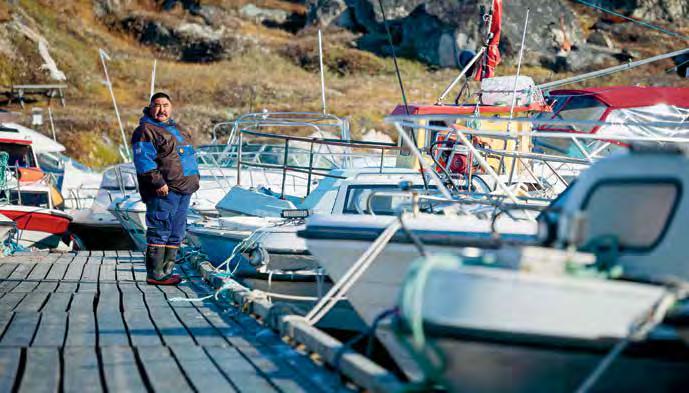
THE KAFFEMIK HOSTESS
Carla Fussing, kaffemik organizer
When Carla Fussing welcomes tourists for kaffemik, she always serves freshly baked buns and several kinds of cake. During the kaffemik, Carla tells her guests about Greenlandic traditions and about living with icebergs for neighbours.
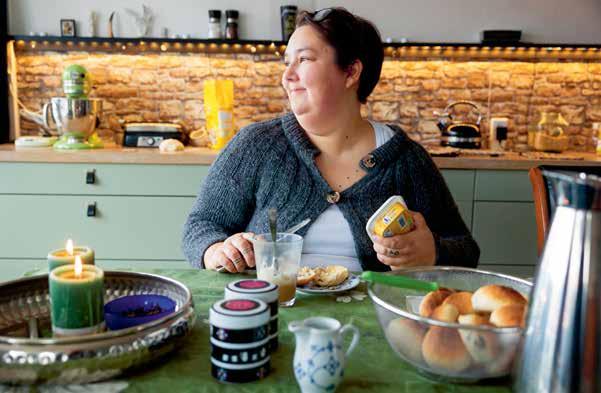
Carla Fussing was born and raised in Ilulissat, in a house directly across from the local police station. Her father, Tom, died last year, so now she and her husband have taken over her childhood home, settling in and making it their own. A home for two parents and two children. The eldest son has left for another town to attend upper secondary school, an option that is not available in Ilulissat. The house has a view of the sea and the towering icebergs. A view that changes daily and varies from calm to storm. The tourists pass by on the street outside. Some in groups, others on their own and with rambling gear. From time to time she invites tourists in for a kaffemik. Kaffemik is a Greenlandic word meaning ‘to celebrate with coffee’. Traditionally, it is a day-long event, where people drop in, settle down to have some coffee and cake and then leave again, so someone else can take their place. A tradition Carla grew up with. ‘It’s something we have always done, so we don’t need to think about whether we
are staying true to tradition or remembering to do things a certain way. It’s just something we do, and it would be really strange if we stopped doing it,’ says Carla of the kaffemik tradition. Together with her father she began to organize kaffemik for tourists seven years ago. Others in town were already doing it, but they had difficulty explaining the tradition in other languages besides Greenlandic. And so, thanks to her language skills, Carla became a kaffemik hostess in addition to her day job as a bookkeeper. ‘Dad loved hosting kaffemik and enjoyed talking about the old Greenlandic traditions and showing others what Greenland was about. He had an Arctic garden with alpine flowers and a greenhouse where he grew vegetables, so he could show the tourists that it was in fact possible to grow things in Greenland. That often surprised them,’ Carla says with a smile. When Carla hosts a kaffemik, she speaks about the traditions. How in the old days people used to show up with their own cup when there was something to celebrate. Later, people began to serve both coffee and cake, and by now the event has grown to include savoury foods, often reindeer meat. When she welcomes tourists, she serves buns, apple cake and two or three other traditional cakes. ‘That is how my dad and I once decided we would do it. And I have kept it that way,’ she says. The size of the groups who gather in the living room with its view of the icebergs varies a great deal. Sometimes, there are twenty-five guests, sometimes just two. ‘But we always have a good time, and it’s very different from one kaffemik to the next. Some tourists just come in and sit down for coffee and cake. Others lend a hand in the kitchen and stay afterwards to help with the washing up,’ she explains. Over kaffemik and washing up, there is also time to talk about Ilulissat, the icebergs, climate change and the balance between having a living, thriving town and accommodating the many tourists. ‘We are happy to welcome so many visitors to our town, but it is not without challenges. On the first day of the school year, it can almost be difficult to get in, because there are so many tourists wanting to take photos. The same thing happens at christenings, funerals and other private events. I can understand that the tourists wish to take home a slice of authentic life, but on the other hand we would also like some privacy. So that is a balance we need to work out together,’ says Carla Fussing.
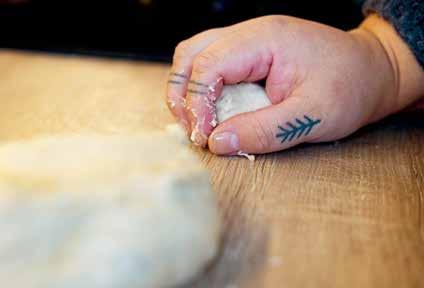
On her right hand, Carla Fussing has traditional Inuit tattoos. On her thumb is a napaattooq, a plant that endures through the winter. On two other fingers, Carla has two lines, symbolizing the Mother of the Sea.
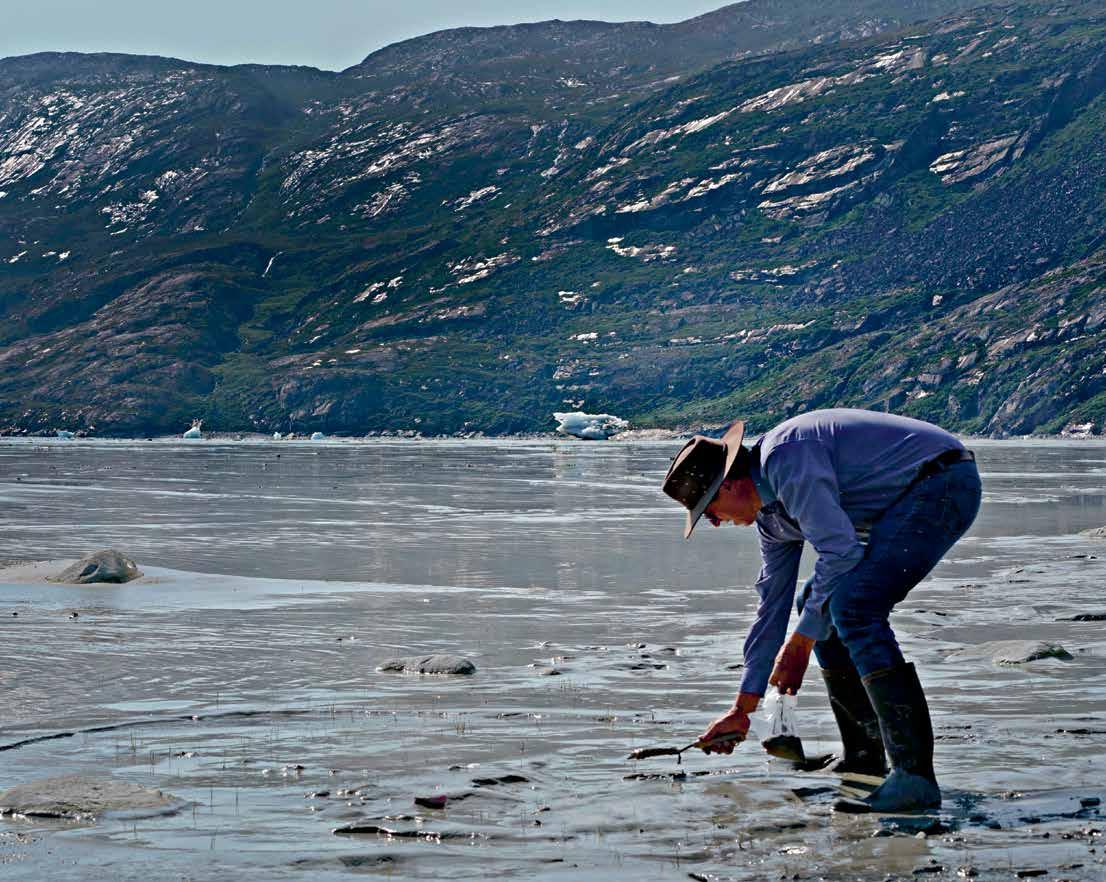
TIME
‘In many regards, Greenland has become a symbol of climate change. Here, the impact is tangible, not least around Ilulissat. The icecap is melting, and the sea ice is gone, and to people in Greenland the loss of the sea ice in particular is hugely consequential, because the sea and the coastal areas are their livelihood.’
– Minik Rosing, Greenlandic geologist and Professor of Geology at the University of Copenhagen, Denmark
‘Time is both a very concrete and a completely incomprehensible phenomenon. In geology, we operate with a time span of 4.5 billion years, which is how long the earth has existed. If we look at civilization, our time horizon shrinks down to 10,000 years. And in most societies, time governs everything we do and what we do next. If you ask a colleague to join you for lunch, they will probably check the time before they reply – as if time can tell us whether we are hungry. However, regardless of how we break time down, it has a direction.
In Greenland, time is intimately intertwined with the strong presence of nature. Many things simply cannot be planned. When people visit Greenland, I usually tell them to think about what they would like to see. Not when. The timing depends on the changing circumstances. The same is true when you live here, at least if you work in one of the traditional occupations or any business related to it. If the weather is bad, you cannot go fishing or hunting. Once it clears up, you have to go, even if you had other plans. If you make it, you make it. If you don’t, that’s just the way it is.
Once I was on Greenland’s east coast with work, and we were supposed to sail to the former settlement of Skjoldungen. We ended up being trapped in the ice for five weeks. Time became relative, since there was nothing I could do, except wait for the ship to break free.
A generation ago, some people began to talk about climate change as a real issue. Few people listened, and even fewer took action. Most people – including
An important element in the exhibition is the authentic ice cores drilled from the ice cap. They tell the story of culture and climate dating back to 124,000 BCE. The ice cap is formed by layers of snow that have fallen year after year and have gradually become compressed by the weight of subsequent snowfall.
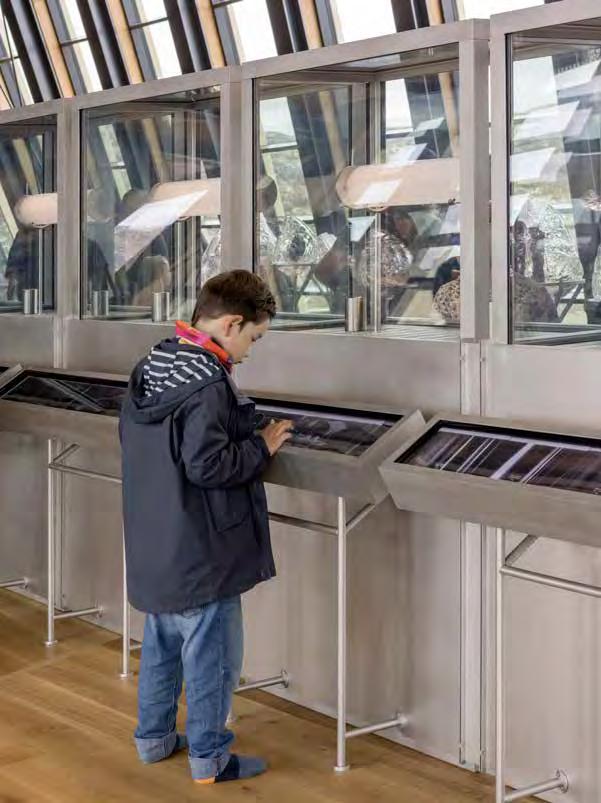
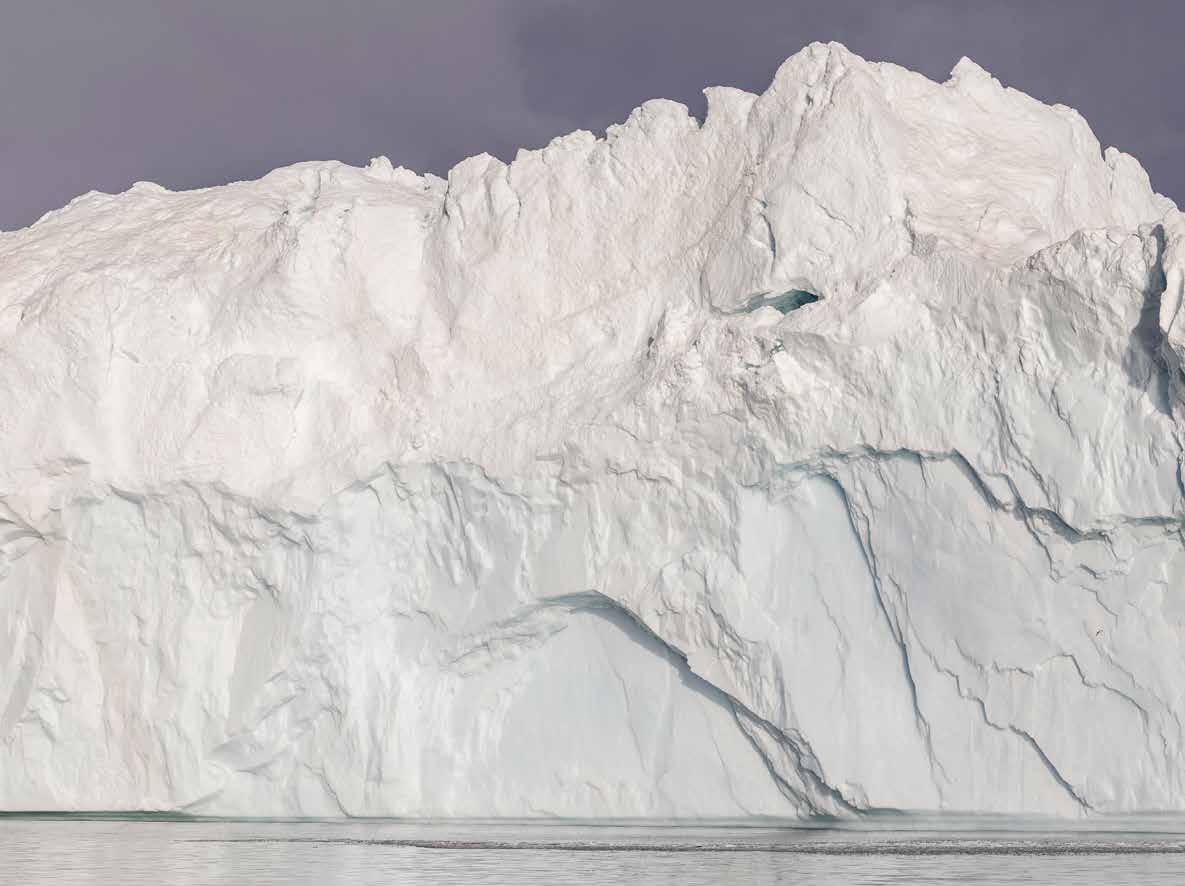
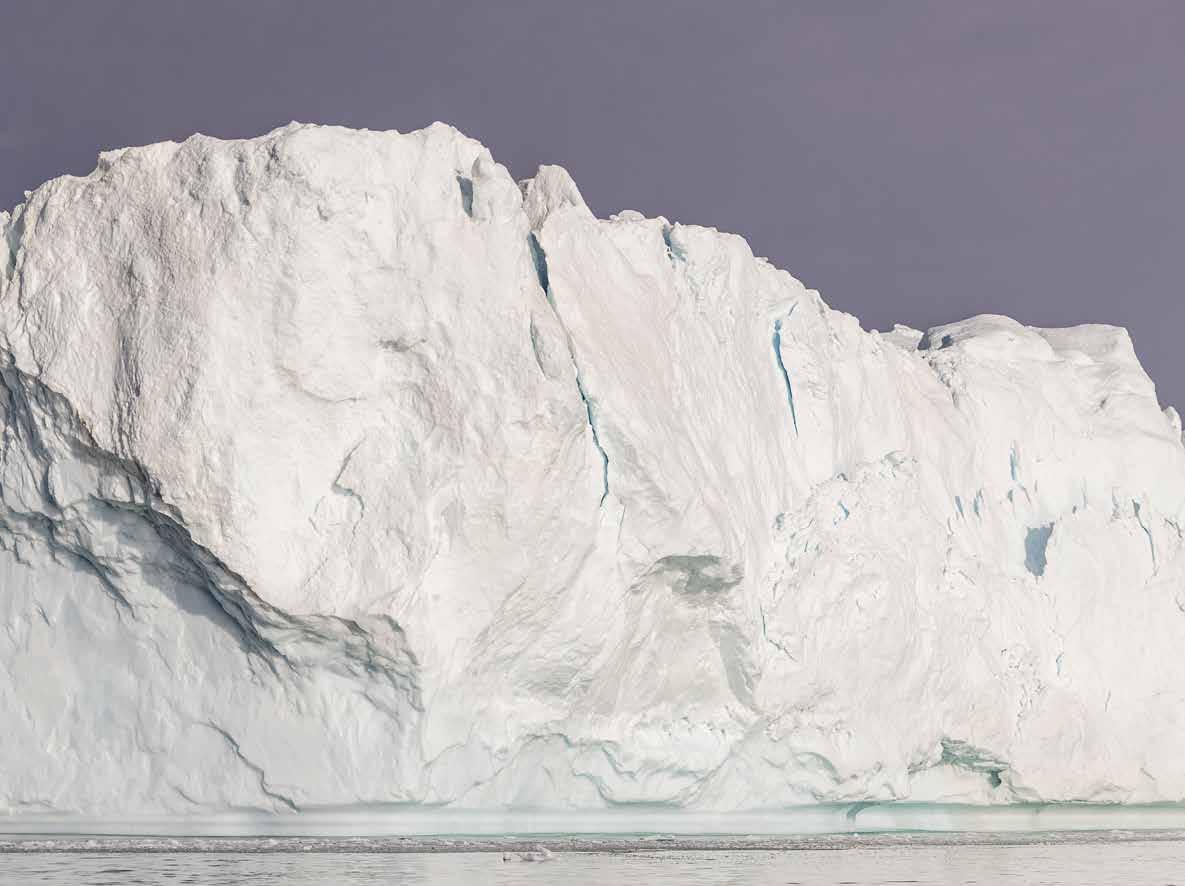
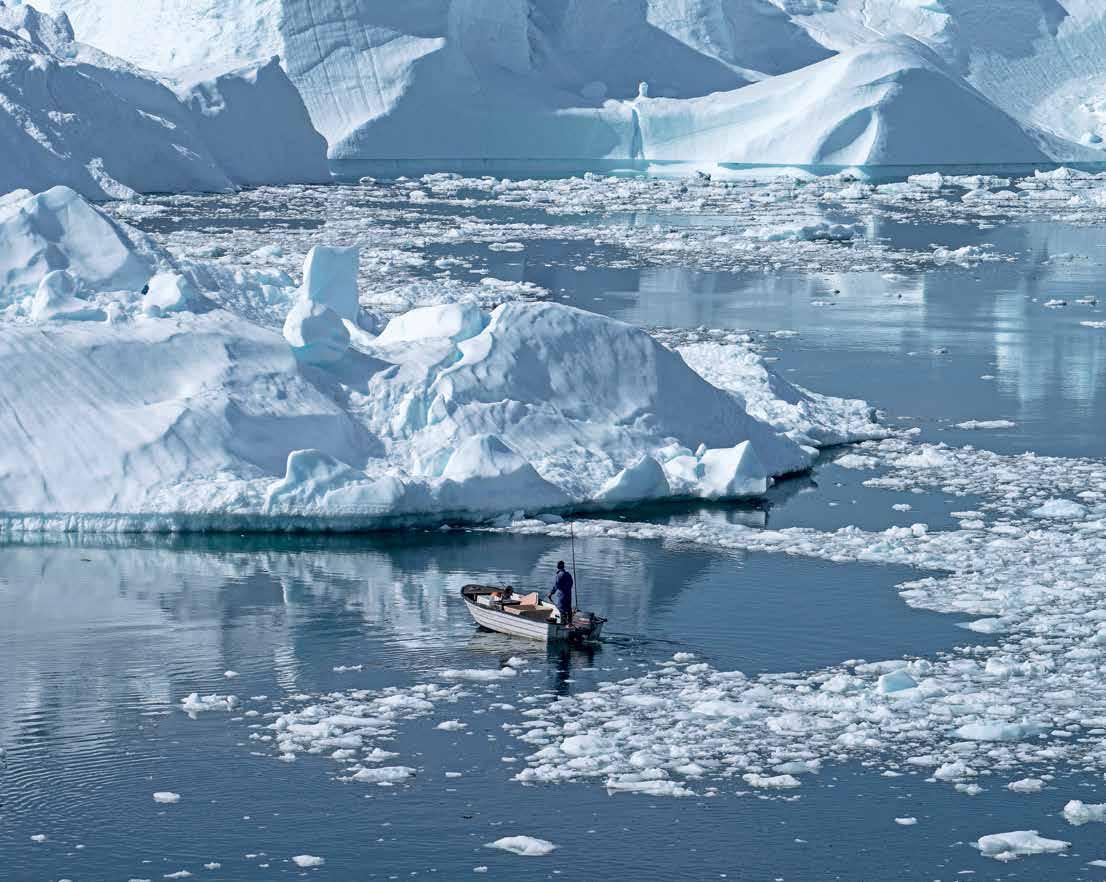
politicians and the CEOs of major companies – were focused on the next election, the next annual report. The timing was probably right, and yet it was wrong, because no one was truly ready to do what it takes.
Today, things are different. In large part, this is because the children from that time have now grown up and are adult consumers and voters. They are making waves, calling for action and taking action themselves, because they are the ones who will have to foot the bill for the overconsumption and complacency of my generation.
In many regards, Greenland has become a symbol of climate change. Here, the impact is tangible, not least around Ilulissat. The icecap is melting, and the sea ice is gone, and to people in Greenland the loss of the sea ice in particular is hugely consequential, because the sea and the coastal areas are their livelihood.
The disappearance of the sea ice has triggered cultural changes. In the past, people could travel from village to village on dog sleds. And during the winter, everyone had plenty of time on their hands. Now, the fishing boats go out to sea all year round. Also, large numbers of tourists are coming in, so fishing and hunting are no longer the only sources of income.
Ilulissat in particular has many visitors who come in from all over the world on planes and cruise ships. They want to come here to see the impact of climate change first-hand and visit the Icefjord Centre in order to learn about the story of ice.
